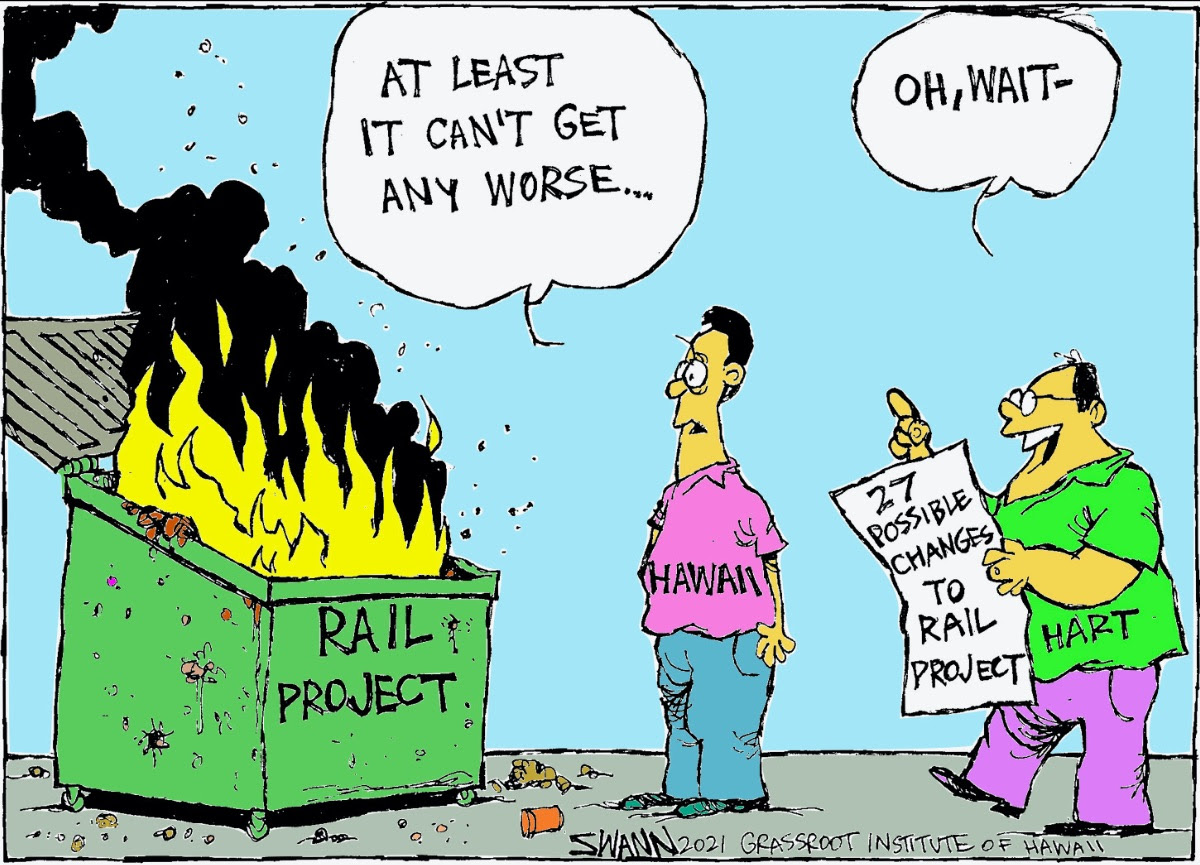
HART needs to quit being so secretive
by Keli’i Akina, PhD, President/CEO Grassroot Institute
For years, Hawaii citizens have been asking the Honolulu Authority for Rapid Transportation to be more transparent about its multibillion-dollar Honolulu rail project.
We have wanted to know more about why it has been costing so much, how HART expects to pay for all its construction and future operating costs, and whether HART has considered options that could possibly help it finish the rail project sooner and at a price taxpayers can afford.
Earlier this year, the Grassroot Institute of Hawaii learned of a confidential HART document that supposedly examined such questions. Since it was not available to the public, we had to file an open-records request under the state’s Uniform Information Practices Act to obtain a copy.
Marked “Confidential (Not for Distribution),” the document contains analyses of both the original plan for the rail and 27 alternatives to the original plan, which calls for a steel-on-steel elevated rail system extending from Kapolei to Ala Moana Center. Right now the rail has made it about halfway, to the Middle Street area, where many people would like for it to stop.
The 27 options to the original plan are divided into eight categories, including technological changes, guideway changes, changes to the stations, utility changes and tunnel or at-grade construction. One section, titled “Move Terminus and Reduce System,” is missing.
Among the alternatives HART officials have analyzed:
>> Terminate the rail at Middle Street and build an “elevated automatic people mover” to Ala Moana Center. Pros for this proposal include a lighter structure, smaller stations and ease of expansion in the downtown area. Cons include changes to contracts, maintenance issues, waste of already-purchased materials and issues with the rail-funding grant agreement with the Federal Transit Administration.
>> Terminate the rail at Middle Street and switch to bus rapid transit. The pros include lower costs, long-term flexibility and the ability to utilize driverless technology in the future. The cons include the possibility of slower commutes, lower ridership, the probable need for an environmental impact statement and, again, issues with the FTA grant agreement.
>> Have the rail go underground to Ala Moana. Pros include higher ridership and better integration with a multimodal transit system. Cons include the very high price of subways, probable delays, the need for new approvals and designs, higher cost per rider and issues with the FTA grant agreement.
There are 24 other changes considered in the document, which can be read in full via the Grassroot Institute website. Some of the changes would be small, like different ways to handle utility issues. Others would be moderate, like moving stations or altering the route. A few, like the suggestions to transition the elevated rail line to street-level track, or switch from traction power to maglev, would represent revolutionary changes to the original plan.
On the one hand, it’s good to see that HART has been considering alternatives to the original rail plan. With the over-budget and behind-schedule megaproject in complete disarray, we are long overdue for an honest, accurate and transparent assessment of its future.
So why did HART officials wish to hide the fact that they were looking at alternative plans for the rail? So far, we don’t know.
When HART board member Natalie Iwasa asked at a recent HART board meeting why the alternatives document was confidential, she was told by HART Chair Tobias Martyn, “We as an organization need to have the confidence of our stakeholders that we are committed to completing the project,” and, “We’re not ready to get into having that discussion yet.”
This is exactly why HART and the rail have lost public support. Honolulu taxpayers deserve to know what is going on with rail, how their dollars are being spent and whether there is a real effort to address the cost overruns.
Right now, we are at a turning point for the rail project. There are no contracts in place to extend the rail past Middle Street, which makes this the perfect time to press “pause” and consider all of our options.
Of course, in order to make informed decisions, we need updated data and total transparency from HART. Maybe the solution is one of the alternatives in the previously secret HART document. Maybe the right answer isn’t even on the list. It could be that we need to explore multiple changes to the original plan. Whatever the answer, HART officials and our elected representatives need to be more transparent about costs, operations and expectations.
I’m hoping the document we uncovered will help facilitate a broader and more informed discussion about the future of rail. But it will take a lot more transparency than just this one document for the project to achieve a reasonable outcome.
E hana kākou! (Let's work together!)
Keli'i Akina, Ph.D.
President / CEO